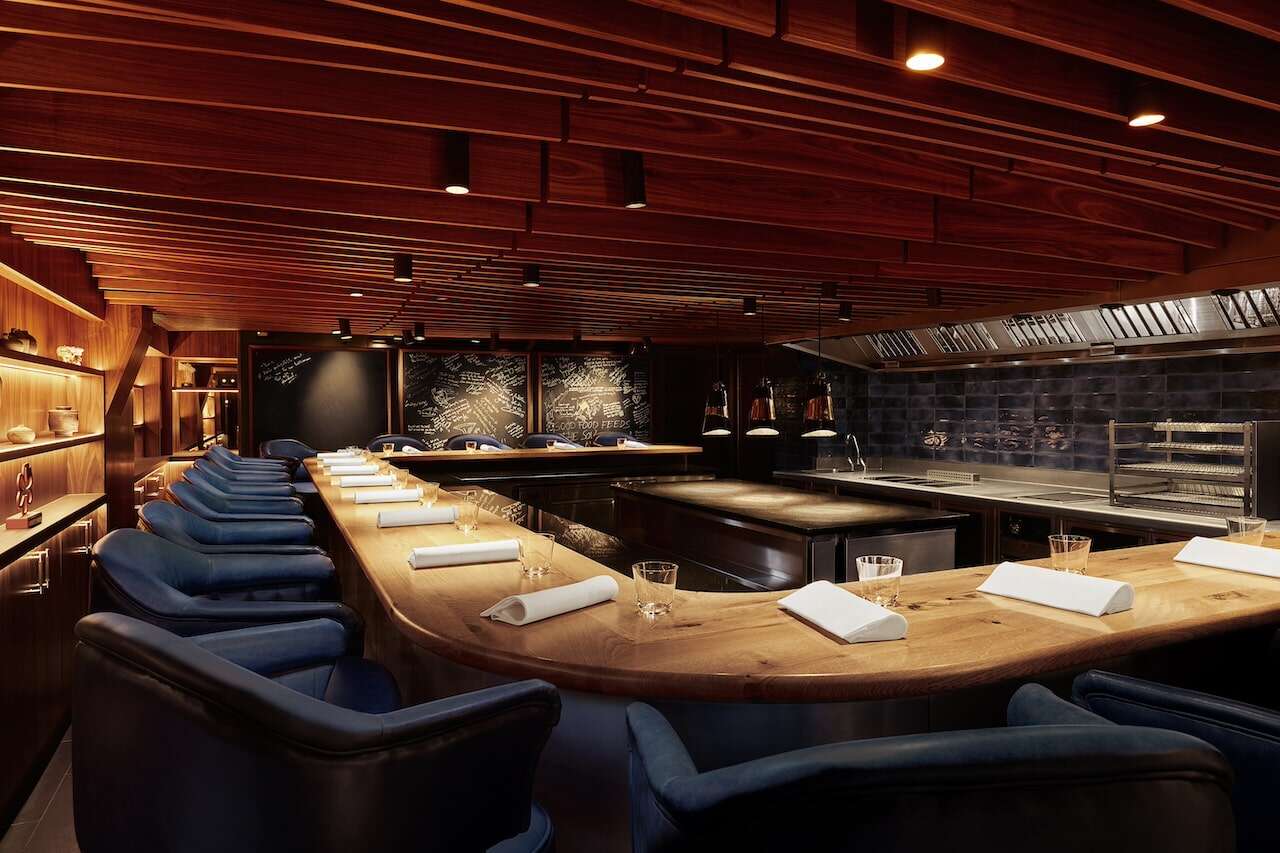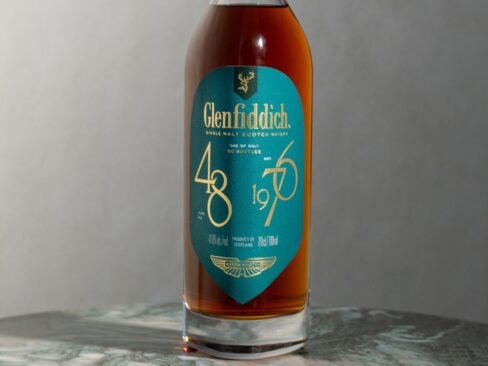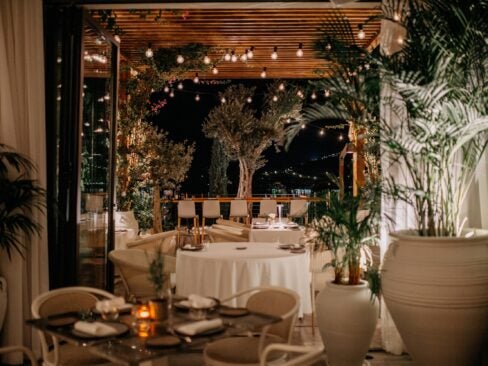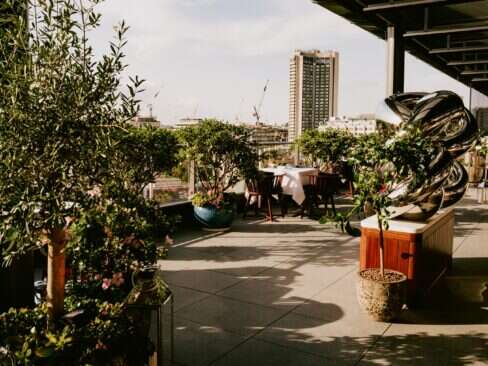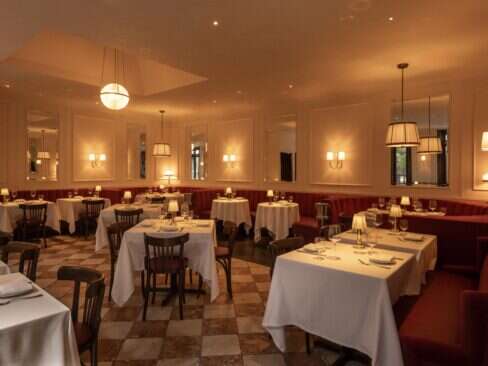If I’m heading to an exciting restaurant, I like to peruse to menu beforehand. Most people do. It helps build the anticipation and the appetite. As I make my way to London’s Kitchen Table, that’s not possible. There’s no menu on the website, not even a sample. And as the offering changes daily, even if I manage to find one elsewhere, it’ll be out of date.
The website does offer a hint of what’s on offer: “Meticulously sourced and foraged seasonal British ingredients… like oyster, truffle, scallop or deer.” At least we know it’s a restaurant now. If that wins you over, go to make a reservation and you’ll be politely asked to pay the entire menu price – £200 ($250) per person – upfront. On the menu, you choose one of two options: the tasting menu or the vegetarian tasting menu. Oh, and there are only two sittings per day: 6pm and 9pm.
It might sound a little inflexible at this point, yet despite its efforts to perplex prospective customers, Kitchen Table seldom has an empty seat. Reservations are snapped up almost as soon as they are released. Cancellations are filled by a lengthy standby list. This feverishness is usually reserved for the hot new place in town, but Kitchen Table is 11 years old.
Over a decade in, the two-Michelin-star restaurant continues to be one of London’s most exciting and innovative dining experiences. In 2021, they upped the ante with a major glow-up of the interiors and the menu, quite possibly with intentions for a third star.
[See also: Rising Stars: Next-gen Chefs in the Michelin Guide]
The chef
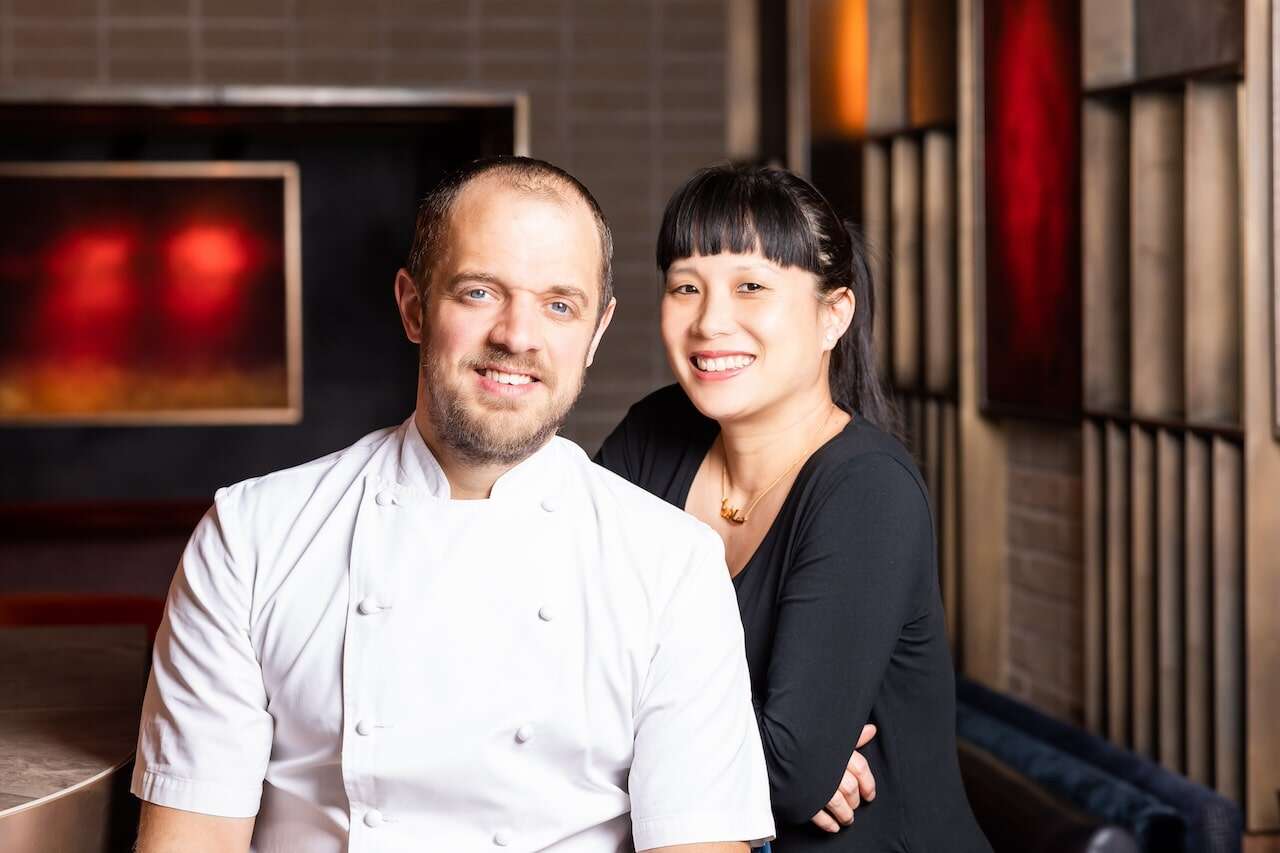
In a world where so many chefs appear to be nowhere near their eponymous restaurants, the sight of chef-patron James Knappett behind the pass is a comfort. Knappett co-founded the restaurant with his wife Sandia Chang, an award-winning sommelier, who both continue to run the day-to-day operation.
Knappett gained his first Michelin experience in London at Restaurant Gordon Ramsay, The Berkeley and The Ledbury, all long considered to be among the best restaurants in London. After a stint in Cornwall, he left the UK to take up a position at New York’s Per Se under Thomas Keller, before returning to Europe to work at the legendary Noma in Copenhagen.
Despite the international journey, Knappett built Kitchen Table around a philosophy of using local and seasonal produce, usually from the tiniest of artisanal operators from sleepy corners of the UK. He channeled his inner Keller by turning hearty ingredients into highly refined dishes in an inimitable style, gaining a first star in 2014 and a second in 2018.
The concept
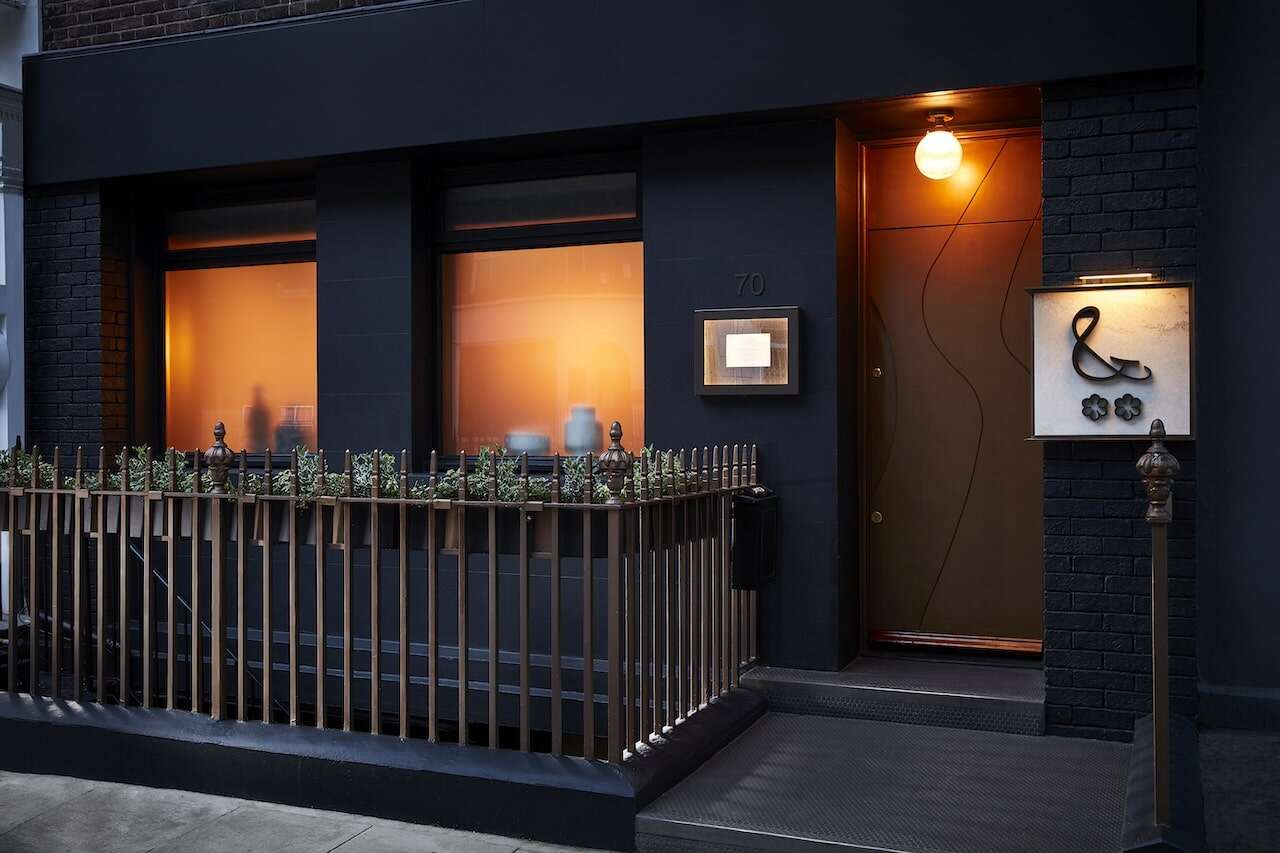
Chef’s tables are now part and parcel of any new fine dining restaurant in London but are supplementary to the overall offering, an elevated experience should the main salon feel just too pedestrian. Kitchen Table does away with the dining room, dedicating the entire operation to only 20 covers per evening.
The restaurant is as much a stage as it is a chef’s table. The 20 seats surround the kitchen in a U shape. In the middle, chef-owner James Knappett stoically orchestrates a brigade of chefs to produce a multi-course feast using mostly British ingredients.
By formalizing the diners (everyone sits down at the same time and, for the most part, eats the same thing), Knappett gives himself the freedom to push the limits. That is why no two nights are the same. The menu isn’t fully set until the team takes delivery of that day’s produce. They’ll use anything, so long as it’s the best.
The experience
Guests who arrive promptly enjoy 45 minutes in the lounge. It’s an excellent way to settle into an evening. Here you sample some of the house-made spirits and cocktails imagined by Chang and her bar manager Mickey Kwasniewski.
[See also: The Most Expensive Restaurants in London]
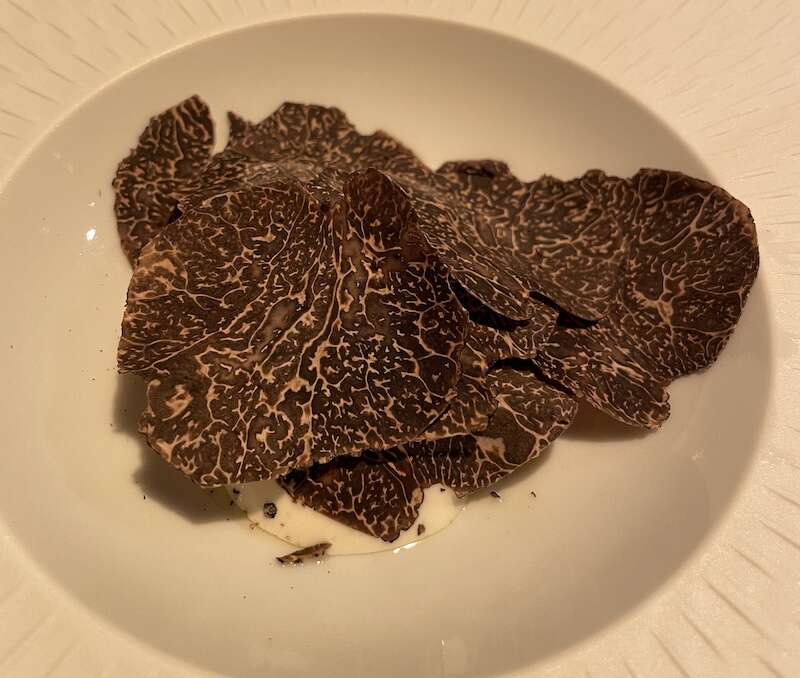
It’s also where a trio of canapes are served almost as soon as you’ve sat down. The first, an oyster, is precisely cut to fit neatly into a thin slice of kohlrabi and oyster leaf. You can eat it like a taco. It’s the tidiest and tastiest raw oyster you can ever hope to eat. There’s also a trio of onions (crispy, compote and pickled) held together with a creme crue whipped with 36-month-aged parmesan. This mixture of textures and flavors – crunchy, soft, sweet and sour – hits the spot.
As the curtain is peeled back and we’re invited to sit down at the table proper, the chefs in the middle have already started plating. There are 12 courses to get through and over 200 plates of food. Time is of the essence. Yet the chef’s voices never get louder than a whisper. The Bear, this is not. They’re relaxed, so we’re relaxed.
The loudest noise of the night is Knappett’s confident voice when each dish is served. He is the lead in this act and explains each dish as if he’s been serving it for years. First, there’s the game broth, cooked with the juices of a duck that is still in its final stages of prep for a later dish. Then there’s the freshly made Parker House bread, served with delicious cultured butter – very welcome on a baltic night.
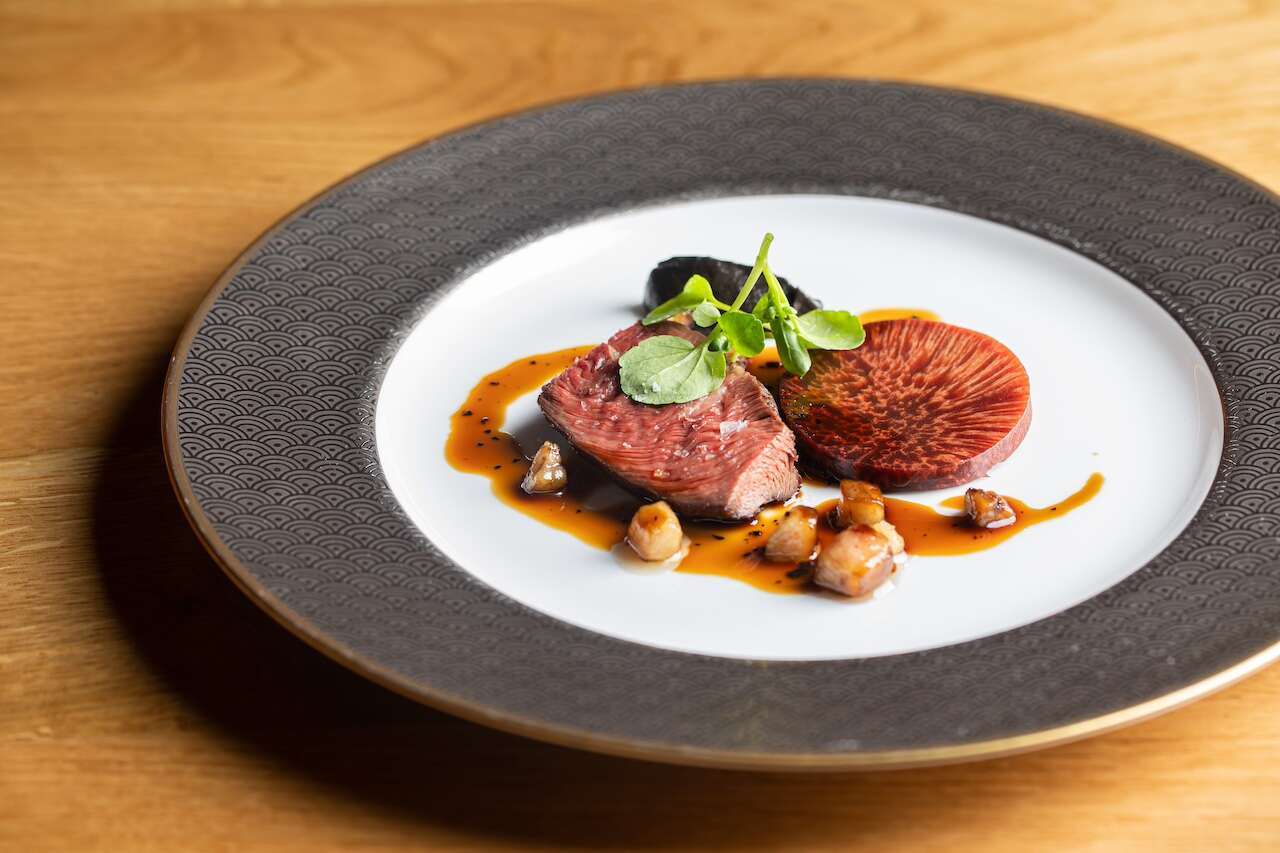
The first main dish of the evening is the Mylor shrimp, which we’re informed can only be caught by hand and, with the few specialists in the field retiring, are becoming increasingly harder to source. Each dish is filled with a wondrous tale of its origin, giving you a sense that even though this restaurant only has five sittings per week, the work that goes into each one of them is endless.
If you manage to get to Kitchen Table soon, you’ll land in the heart of black truffle season. Opt for the £50 ($65) truffle supplement and you’ll get a generous portion atop handmade agnolotti pasta filled with roasted pumpkin. Of the 20 people around the table, 18 appear to have taken the truffle option – the mother of all upsells. And we get another half a dozen shavings on top of some milk ice cream a bit later.
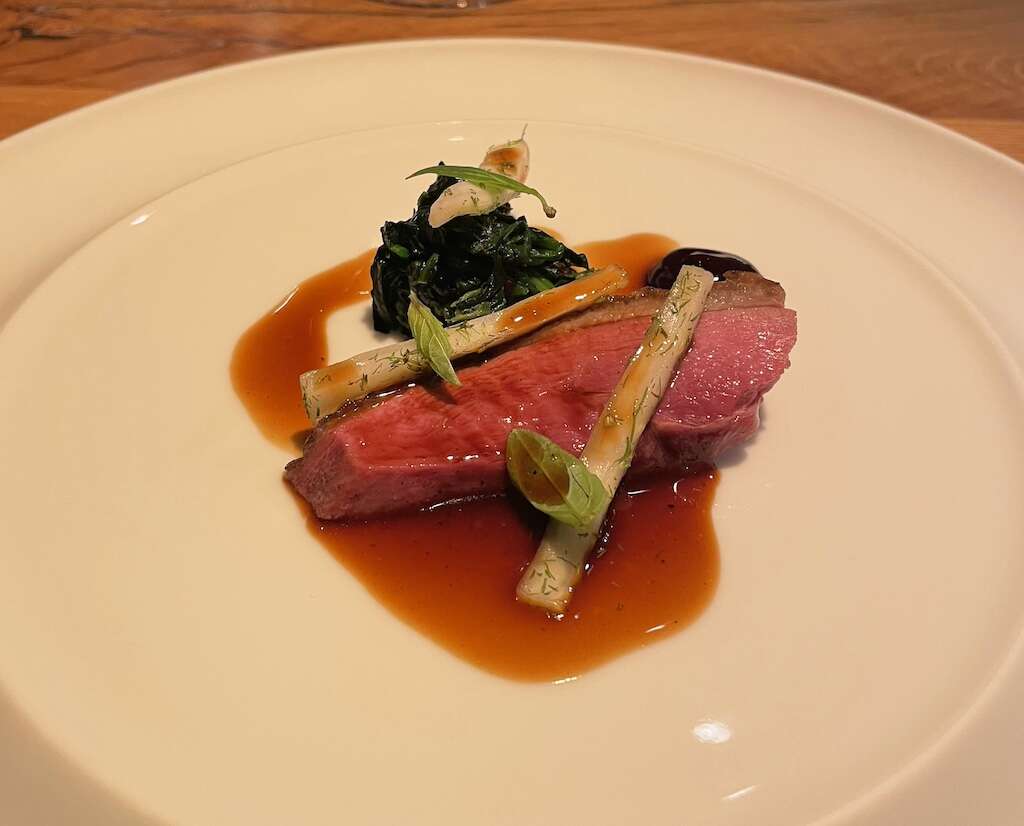
Before that, though, the show-stopping duck arrives carved and delicately presented alongside fennel, spinach and a dash of dulse (seaweed) jam. This one duck goes a long way, also creating an elevated duck shepherd’s pie (duck ragu with a parsnip mash).
The dish of the night, however, goes to the squid. Served like a bowl of noodles in the middle of a Goan-style curry, it mixes coriander, peanut, mango, chicken fat and lobster sauce to create a level of depth across multiple spectrums. Coming just before the truffle pasta and the duck, it was the understudy that stole the spotlight.
By the time the meal is finished, we’ve had 17 individual pieces of food, from palate-cleansing oysters to hearty ragus. Remarkably, there were no discernible weak points. We’ve had hearty meat dishes with winter veg to fragrant fish dishes with delicate foraged herbs. The wine pairing (£160/$200), which included six generous glasses, was just as impressive. Like a good album, each dish and wine led eloquently to the next, all coming together at the end back in the lounge with petit fours and a coffee.
A look at the watch, and all of a sudden we’re glad we started early. It’s taken us over four hours to find our back out onto Charlotte Street, but considering we’ve enjoyed both dinner and a show, it’s gone by in a flash.
70 Charlotte St., London W1T 4QG, kitchentablelondon.co.uk





